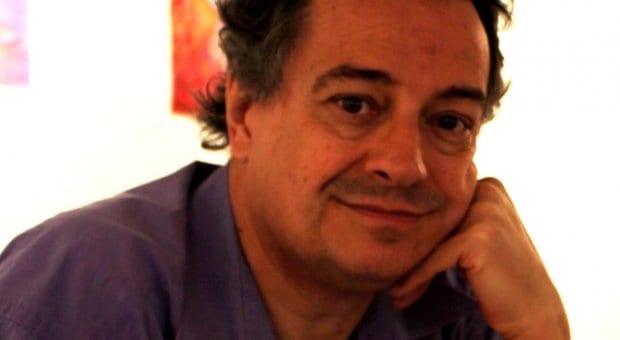Fresh from his Abstracts and Landscapes exhibit at the Arcadia Art Gallery last month, Philip Cairns — actor, writer and painter — is set to perform live in a solo show for Gay Play Day, a theatre festival at Alumnae Theatre.
“For years, people mostly knew me as an actor,” Cairns says. “I worked with a lot of LGBTTQ theatre companies, such as Buddies in Bad Times, Bushwack Theatre and the National Theatre of Canada, and I’ve played a lot of women, drag queens and gay men.”
After long hiatus from the stage, Cairns shares more about the experiences that led to his new theatrical work, Why I’m Not a Star.
Xtra: What inspired you to write the piece?
Philip Cairns: My nephew is a queer writer/performer. For years, I told him stories about the ups and downs of my acting career. He suggested that I write a piece telling all those stories and call it Why I’m Not a Star.
Tell us what it’s all about…
It’s a serio-comic story-telling monologue about the ups and downs of my acting career. I talk about wanting to act since I was five years old, watching The Mickey Mouse Club on TV in semi-drag, wishing I could be like Annette Funicello. I talk about my first audition when I was 11, a gay acting teacher I had when I was 13 and 14, directors I slept with and didn’t sleep with. The piece is divided up into sections describing my evolution as an actor. Lovers that I met through acting. Actors who didn’t want me as a lover. Some of the stories are sad, and some are funny.
What makes the play distinctly ‘Philip Cairns’?
My poetry is serio-comic. In the late 1980s and early 1990s, I wrote lots of performance pieces. One, A Gay Witch’s Brew, was autobiographical. It talked about my explorations into the occult. Why I’m Not a Star is 100 percent autobiographical. My work is usually very confessional; I lay my heart on the line. I take myself seriously, but I can see the absurdity of life.
What does it say about being a gay artist?
In Toronto, there is a lot of discrimination against gay actors, particularly in film and TV. If you’re at all obvious, you don’t get called in much for auditions for film or TV. This has been my experience. In the piece, I also talk about working with lots of gay actors, directors and writers. I mention being told (by an agent and at an audition when I was 11) I was too feminine. A few years ago, one director said he wouldn’t cast me as the Wizard of Oz because I would give a gay spin on the role and that wasn’t appropriate for his show. My poetry talks a lot about gay sex. I love men. I love their faces and bodies. I know a lot of gay people. All these things come out in my work.
Describe your body of work and how this piece fits into it?
In 1981, I started to exhibit my paintings and drawings, and in 1983 I started performing my own writing in public. Since then, I’ve continued to pursue all three careers. I’ve had my work published sporadically in Xtra, The Body Politic and numerous literary quarterlies. As a poet, I’ve been performing/reading my work a lot around town, particularly in the last six years. I starred in the film feature Fluff and the Cannes Film Festival short Abortion Is Fun. I think my work in all three disciplines has gotten better as I have aged.
Why I’m Not a Star
Opens Sat, Sept 28, 3pm
Alumnae Theatre, 70 Berkeley St
$10
gayplayday.blogspot.ca

 Why you can trust Xtra
Why you can trust Xtra


